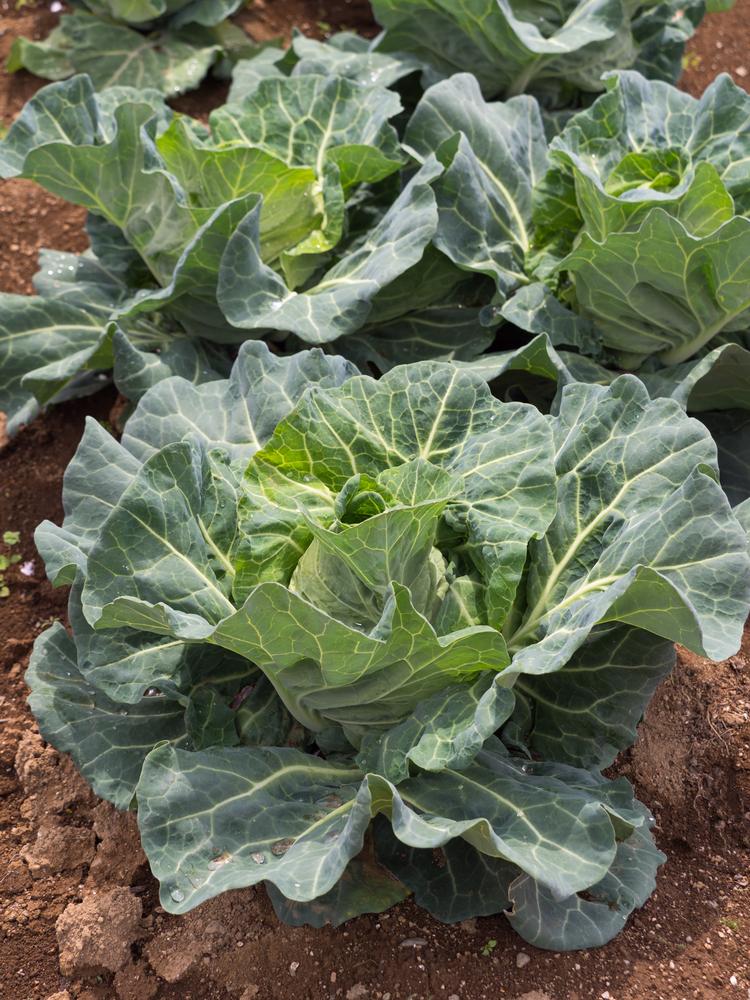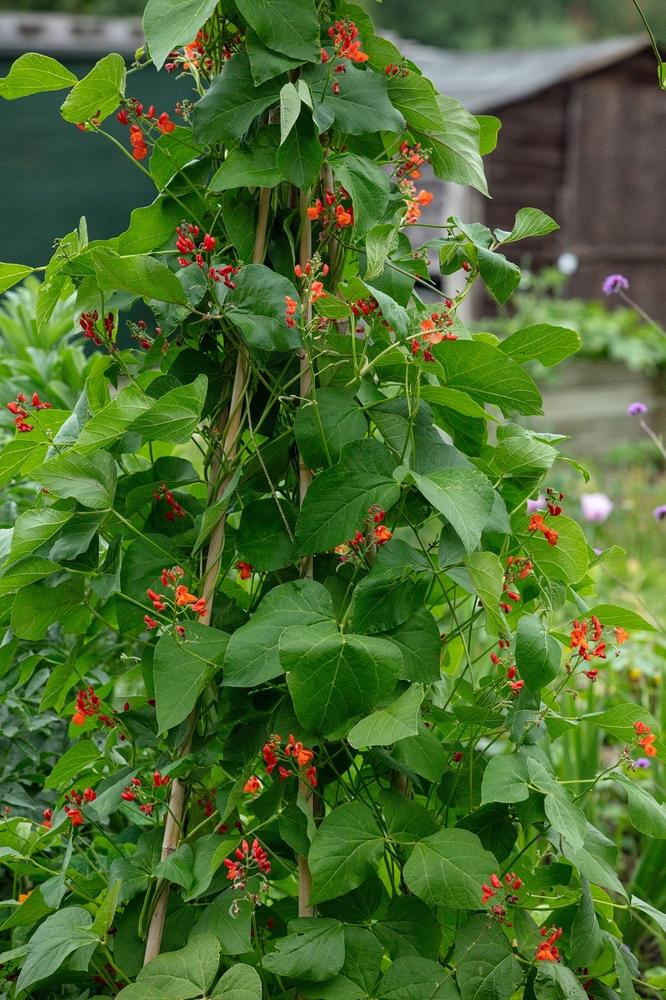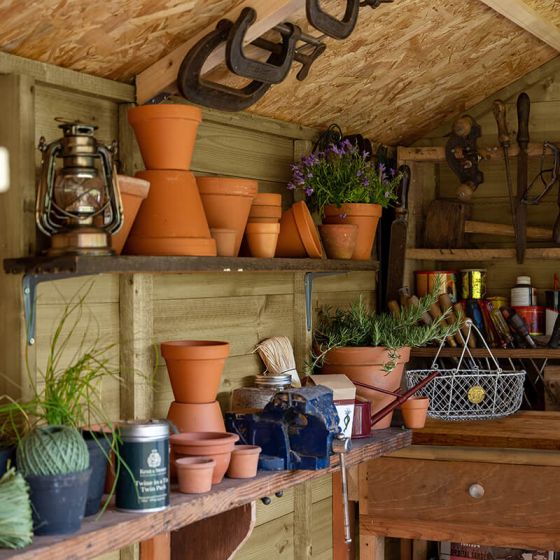August Hints & Tips
August is often one of the hottest and driest months of the year, reliably bringing the summer to a glorious close. An abundance of warm and dry weather means that there is a lot to do to keep our gardens looking at their best. Watering becomes a critical activity as we give plants a helping hand in the heat, the vegetable patch is cropping heavily, and the lawn is in full use as a place to relax in the sun.

What vegetables to plant in August
August is the perfect time to think about quick- growing plants which can be picked before the year comes to an end. These seeds can be sown straight into soil outside, filling the gaps left by previous harvests:
- Carrots
- Florence (bulb) fennel
- Lettuce (Lamb’s lettuce, mizuna, mustard)
- Pak Choi
- Radish
- Rocket
- Spinach
- Spring cabbage
- Spring onions (winter varieties)
- Turnips
They will give you a crop into late Autumn and beyond.
Plant out any remaining kale, winter/spring cauliflowers and winter cabbage plants, if you have them.

What vegetables to harvest in August
August is wonderful time in the vegetable garden. Your efforts from earlier in the year really pay off, and you could be harvesting any or all of the following:
- Aubergine
- Beetroot
- Broad Beans
- Broccoli
- Carrots
- Cauliflower
- Chilli peppers
- Courgettes
- Cucumber
- French Beans
- Globe artichokes
- Lettuce
- Onions
- Peas
- Potatoes
- Radish
- Runner beans
- Summer cabbage
- Sweet peppers
- Sweetcorn
- Tomatoes
- Turnips
Things to do this month:
- Have a watering plan in place if you are going away. Ask friends, family and neighbours to pop in, or set up an automatic watering system.
- Containers are especially vulnerable in hot weather as the plants in them have less soil from which to obtain water.
- Keep paths looking good by dealing with any weeds that appear between the cracks.
- Turn the compost heap. Keep it active, keep adding to it, and enjoy the many benefits that homemade compost will bring to your garden.
- Leave a pile of twigs and seeds heads aside for wildlife to feast upon before they hibernate in the autumn.
- Trim hedges before their growth slows in the autumn.
- Pick pretty flowers, such as Dahlias, for displaying in the home or as a gift to a neighbour or friend.
- Top up bird baths and ponds. Water will evaporate quickly in the heat of summer.
- Make sure you have found time to sit back and relax in your beautiful garden!
From the potting shed...

Our monthly gardening newsletter, written by our Great Amwell plant department colleague, Chris Milborne.
August can be a difficult month in the garden if conditions are hot and dry. Plants in containers and hanging baskets quickly lose their vigour and run to seed, shrub leaves shrivel at the edges, herbaceous perennials fade, and the soil can be hard and dry. However, in 2024, the plants enjoying the wetter than normal conditions look glorious, especially hydrangea flowers, spectacular herbaceous flower borders and flourishing plants tumbling over pathways. August is the peak of Summer colour in the garden and as the month progresses, colours seem to change from pastel shades of early summer plants to warm, hot colours of late summer flowers in bright blue, vibrant yellow, red, orange and pink. All these colours and displays can be enhanced by ornamental grasses such as Miscanthus, Pennisetum Stipas and Panicum. The feathered leaves and attractive seed heads of the plants dotted about make the flower borders look glorious in the early evening sunshine.
Black, white and red currents and Gooseberries have produced a bumper harvest this year but strawberries lacked flavour. Tomatoes, sweet corn and courgettes are some 3 to 4 weeks behind, early potatoes are on the small side and basil seems to be favourite for Slugs! August weather can bring hot, drier conditions and vegetable plants such as lettuce, rocket, spinach and coriander soon run to seed, so keep soil moist. When watering ensure you get right down to the roots rather than just the leaves - a thorough weekly soak is better than a daily trickle. I find watering early in the morning rather than in the evening is better, as overnight damp leaves are more attractive to slugs and snails. Mulching with an organic compost or soil improver will also help to retain moisture. You can even use grass clippings as a mulch, provided the grass is not going to seed or if you have used weedkiller.
As the many plants in flower fade, deadheading is essential at this time of the year to keep new flower buds forming, especially when returning from holidays. Roses, Penstemons, Dahlias Heleniums, Astrantias and Rudbeckias all benefit from the removal of dead flower heads, as they look tidier and it restores energy into more flowers and new growth. A liquid feed such as a tomato feed or seaweed feed gives plants a boost.
Sweet peas keep flowering - dead head all old flowers weekly, as once they produce seed pods flower production slows right down.
To keep plants in hanging baskets, tubs and containers flowering throughout August, it is vital to keep dead heading and boost with a weekly feed. One week I use Miracle Gro, the next a liquid tomato feed to maintain healthy flowering plants. If tubs and containers have suffered whilst you have been on holiday, any gaps or dead plants can easily be replaced with large pots of summer bedding or colourful herbaceous plants and ornamental grasses. These are wonderful plants to use for instant impact and provide colour. Herbaceous perennials including Kniphofias, commonly known as Red hot pokers, Penstemons Rudbeckia, Salvias, Crocosmias, Agapanthus, plus ornamental grasses for foliage create interest and makes flowering plants stand out. For large bedding use Dahlias, Cosmos, Zinnias and Impatiens New Guinea Hybrid. All these plants will flower for the remainder of the Summer into Autumn. Towards the end of summer replant tubs and containers with autumn and winter interest plants and spring bulbs.
In the vegetable patch, August is the month of harvest for veg such as beetroot, French and runner beans, cucumbers, lettuce, radish, ruby chard, sweet corn. Onions, shallots and garlic can be lifted then dried, ready to store with beans, courgettes and summer squashes - the more you pick, the more they grow. These vegetables are delicious picked straight from the plant, cooked and eaten fresh, especially peas and sweet corn and packed with goodness. You really appreciate the food after all the work gone in to growing your harvest. Another tip for tomatoes is just to water around the roots and keep foliage dry. When growing tomatoes in a greenhouse or polytunnel, rather than outside the drier conditions this help prevent tomato blight. Keep up with weekly liquid feeding and start removing lower leaves as trusses of fruit develop, as this helps with ventilation and allows more sunlight to reach the fruit. Sunlight not only helps ripening, but also produces sweeter fruit. With outdoor tomatoes, once five trusses of tomatoes have been produced, remove the tip of the stem so all the energy is then diverted into fruit production and growth, helping to prevent lots of small green tomatoes at the end of the season. This is particularly important this year with lower light levels and harvest being some 3 to 4 weeks behind.
Surprisingly, August is also a busy month for sowing winter and spring produce. Soil conditions are just right for sowing lettuce, spring cabbage, rocket, parsley, turnips, spinach, chard, Chinese cabbage and Pak choi.
If you want fresh, home-grown potatoes for Christmas Day, plant up three seed potatoes in a large container or potato planter, in a sunny, sheltered position. As plants grow, add extra compost to the container. As the weather turns cooler in the Autumn, bring the container into a greenhouse, or polytunnel for extra warmth and weather protection. This will produce tasty, freshly dug potatoes for Christmas. I have found potatoes to grow about the size of a golf ball and on average, a seed potato produces about 10 potatoes. In the Autumn, plant up a pot of mint - these can be grown on a bright kitchen windowsill and will produce fresh mint throughout autumn and winter.
If you have any spare soil in the vegetable patch, sow green manures to improve soil fertility and the structure of the soil. This will also add nutrients to the soil, and helps to prevent weed growth. Some green manures are not water hardy and don't require digging in. Others do though and this variety needs digging in to support plant growth in the spring. I have found overwintering green manures helps to prevent soil erosion. I avoid using mustard as a green manure when growing Brassica the following year, as being a member of the cabbage family, it can be a problem with club root.
Prune blackcurrant bushes, gooseberries, red and white currants and summer fruiting raspberries once all the fruit has been picked. Also prune fruit trees grown as Cordons Espaliers, fans and step-overs. Prune standard apples and pears in mid-winter. Keep pruning cherries and plums to the minimum. It is best carried out in the spring once they have started growing, to avoid diseases entering the plants during the autumn and winter.
To grow new strawberry plants from runners, leave a few healthy strong runners and place these down into the soil. Once they form a strong root system, they can then be cut from the parent plant, then either planted out or potted up. Keep them in a greenhouse over winter for early fruit in spring.
Fill up gaps in your borders
August is as good time to look around your flower beds. Any early flowering herbaceous plants past their best can be trimmed, tidied and a good liquid feed given to boost the roots of the plant. The new energy provides new growth - sometimes more flowers late summer, however if plants been there over 4 or 5 years, to regenerate new growth they can be lifted and divided, removing the older central section and replanted or planted elsewhere. When replanting, add extra organic compost to the soil, water well and these new plants will soon start regrowing with extra vigour. In the autumn, give these new plants bone meal to help establish a good root system over the winter.
Any gaps in the borders can be used to add colour and instant impact with Echinacea, Rudbeckias Heleniums, Alstroemerias, Crocosmias and ornamental grasses, which produce spikes of seed heads that look sensational in summer sunshine and when backlit by the lower sun in the evening. Whilst tidying round the plants, remove any weeds - this year they have just kept growing, especially those flowering and ready to produce seeds in their millions. Remember the old saying, ‘One year’s weed seed equals 2 years of weeding’. Weeds also use up valuable nutrients in the soil - consider growing ground cover plants to cover empty soil.
August plants highlights
Some easy to grow and attractive August interest plants include Buddleja - originating from Asia, Africa and China and named after the English botanist Adam Buddle. Commonly known as the butterfly bush, it flowers in a wide range of colours whites, pinks, blues and purples attractive to Bees Butterflies and Moths! Some cultivars such as the Buzz range are small enough to grow in tubs and containers. They fair best in well-drained soil and a bright sunny position. For taller varieties, give them a hard annual prune to keep compact.
Hydrangeas enjoyed this year’s weather conditions, although the large flower heads have tended to flop as all the excessive soft new growth is unable to support the large colourful flowers. Hydrangeas are deciduous shrubs or climbers - the two most popular types are the Hortensis varieties or mop heads, a dome of flowers, and the Lacecaps with flattened flower heads and insignificant florets in the centre. Other favourites include Hydrangea paniculata with white or pinkish flowers and Harborescens ‘Annabelle’ is spectacular with huge, rounded heads in white, up to 30cm across.
Hydrangeas are native to China, Korea, Japan, North and South America. Many are natural pH soil indicators - flowering blue in acidic soil and pink in Alkaline, chalky and limes soils. Most Hydrangeas prefer dappled sunlight, although they can tolerate full sun with well-drained, humus rich soil that retains moisture, but isn’t waterlogged. Hydrangea petiolaris is a deciduous climber with white flowers – it’s a splendid climber for a north wall, although it does take a year or so to get established.
Hibiscus syriacus is a plant native to Korea and Southeast China. It has showy and exotic looking flowers in pink, white and blue. The flowers only last a day but will continue to flower over a long period and are tolerant of heat, drought and poor soil. In spring, it is late in producing new leaves and it is sometime as late as May before new leaves appear. Related to this is the very popular long living houseplant Hibiscus rosa sinensis - great for a bright sunny windowsill, although protect it from hot sun. The papery flowers can be yellow, orange, pink and red and like their outside relative, only last a day or so.
Hemerocallis the day lily has done well in recent weather conditions. Native to Asia, it has been grown for a thousand years in Chinese gardens and was introduced to Europe via traders along the silk routes across Asia. In the last 100 years breeders have introduced thousands of hybrids from just 2 species of day lily. With a wide range of colours, except blue and white, they need to be deadheaded regularly to produce more flowers late in the summer.
Penstemons come in an array of colours including white, pink, purple and blue, with some bi-coloured varieties. They do best in a bright sunny position in moist well-drained soil protected from cold winter winds. They should only be pruned in spring once new shoots start to appear. Other highlights include Lavatera, Abelias, Fuchsias Japanese Anemone, Astilbe, structural Cynara for the back of the border and the many Salvias available in a wide range of colours.
Dahlias come in a range of shapes; Cactus, Decorative, peony, single - the flowers are loved by pollinating insects. They come in many colours and sizes, some the size of dinner plates and others the size of golf balls. Dahlias are ideal for cutting or create a themed tropical border planted with Cannas, Phormiums, Banana plants, Alstroemeria, plus grasses with Begonias, interesting leaves and flowers for ground cover.
Climbing plants for a sunny wall include Trachelospermum, Passion flowers, Solanum - the Chilean potato vine and not forgetting the late flowering Viticella clematis. These are also great for training up over evergreen shrubs. Trachelospermum also has a wonderful scent. Feed Camellias, Rhododendrons and Azaleas with a high potash tomato feed or Ericaceous feed and keep them well watered for flowers next spring. This is important if growing in containers as they are now initiating flower buds for next year. Dryness at the roots now is a common reason why flower buds drop next spring or don't flower so well. This is the reason why the flowers on these Spring flowering plants looked fantastic this year, thanks to the damp weather late Summer and Autumn last year.
Prune back all the whippy lateral growth on Wisteria to five or six leaves to encourage flower buds rather than leafy growth. Cut Lavender when flowers start to fade - about 20cm into the current year’s growth to keep compact, rather than leggy and bare at the base. Roses make a perfect partner to lavenders I have planted the Fryers rose ‘Rhapsody in blue’ next to the Lavender in my garden and it looked superb.
Gardeners are always looking ahead and by the end of August we are thinking about what colour schemes we want and what bulbs to plant for spring displays. By planning glorious displays, you will brighten your garden after the winter gloom.
August is a time to enjoy your garden and a great time to visit other gardens in all their glory.


